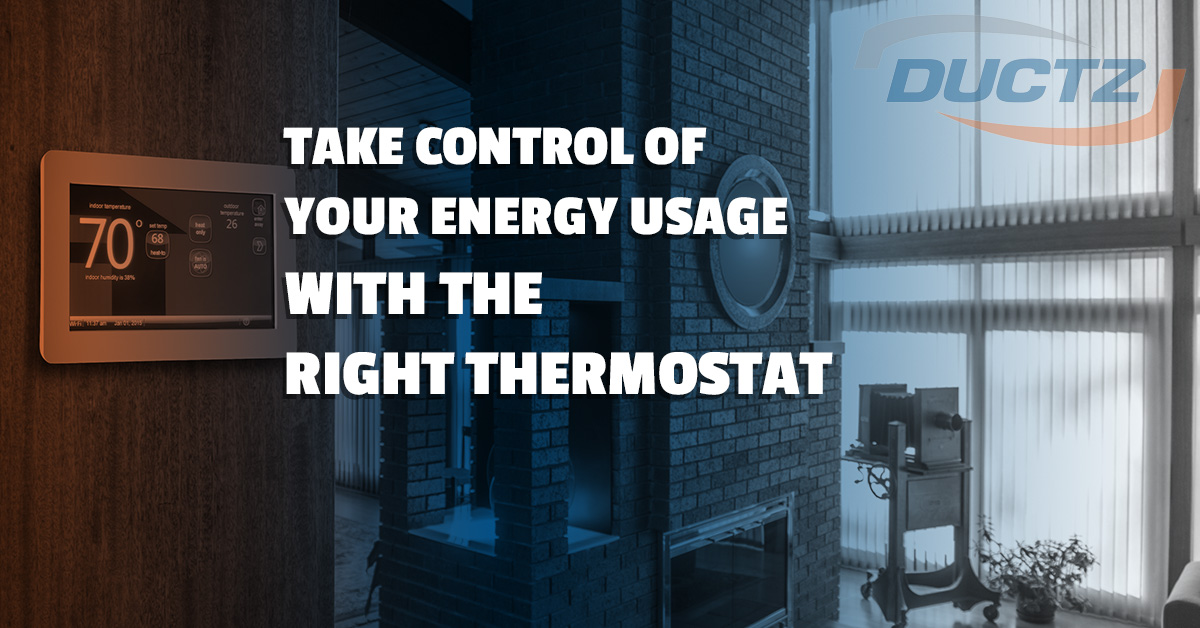Improving energy efficiency isn’t just good for the environment; it’s good for your wallet. One of the main areas for improvement is your heating and cooling system. If you have both air conditioning and heating, your system works all year round, which means it constantly eats your income. There are things you can do to reduce your heating and cooling costs, and updating your thermostat is one of them.
Your thermostat acts as the brain of your HVAC system, telling the machinery when to turn on, how long to work, and when to turn off. It is responsible for reading the ambient temperature and determining if heating or cooling needs to happen in order to achieve your chosen temperature. Without it, you would have to get up and switch your air conditioner, furnace, or boiler on and off yourself. The better your thermostat is at its job, the more efficient your entire system will be. In today’s blog, we want to discuss different types of thermostats available to you.
TYPES OF THERMOSTATS
When you start to explore the types of thermostats available to you, you’ll probably encounter three different types, including the following:
MANUAL THERMOSTATS
This is the most simple type of unit. You’ve probably seen it in older homes, and it can be circular or square. All you do is move the needle to your preferred temperature and that’s it. These types of units are limited when it comes to saving energy and work best for people who stay home and want a consistent temperature all day.
PROGRAMMABLE THERMOSTATS
These thermostats allow you to create a schedule for your HVAC system that lasts the entire week. You can program your system to work with your daily life, working hard when you’re around and falling back when you’re gone. Some units even allow you to create unique programs just for the weekend. These units are great because they can save a lot of energy by adjusting the temperature through the day.
SMART THERMOSTATS
This type of thermostat can be controlled by your computer, tablet, or smartphone. This ability to fine-tune your system can help you save energy, making the most of your budget.

THERMOSTAT COMPATIBILITY
Even if you find a type of thermostat you like, it has to be compatible with your current system, or there’s no point investing in it. The good news is, newer thermostats have been designed to work with a wide variety of system makes and ages. Here are the three main categories you’ll choose from:
- Low voltage thermostat HVAC systems: these are the most common systems today, and they work with most thermostats because they require a 24v power supply.
- Direct line/high voltage systems: if you have an electric or baseboard heating system, it won’t work with all thermostats. You’ll need to get some professional input to determine if it will take a direct line to provide the 110v or 240v power your system needs.
- 24 millivolt systems: these are oil or gas powered furnaces that need specialized thermostats we can help you access.
With cooler weather on the way, it’s important to make sure your heating system is ready to work while saving you energy. Most people start up their heating systems with their fingers crossed, hoping everything will work like it did last season. The great thing about today’s HVAC systems is that they usually can do just that. However, if you’re hearing odd noises or not experiencing the heat you need, it’s time to get your system checked out by professionals. Contact our skilled team for HVAC and air conditioning repair service in Dade today!
